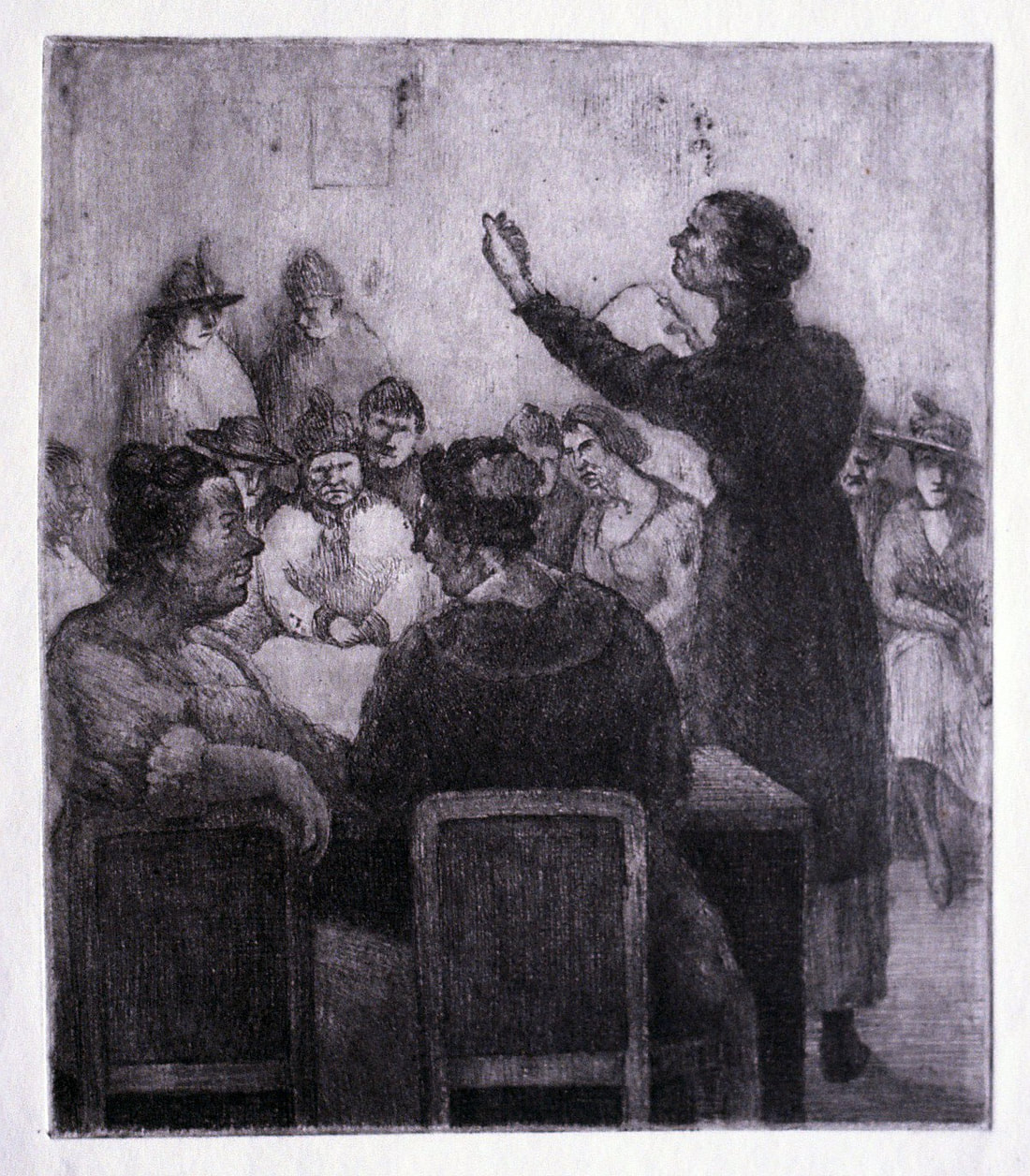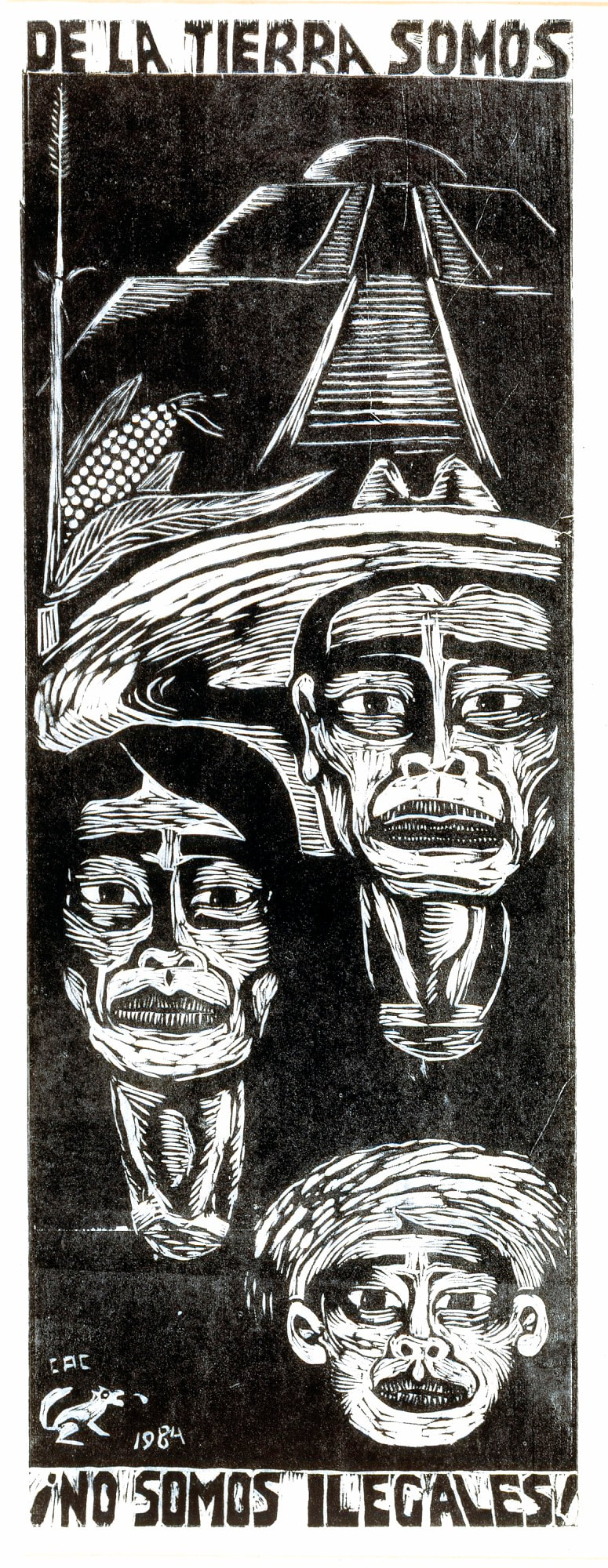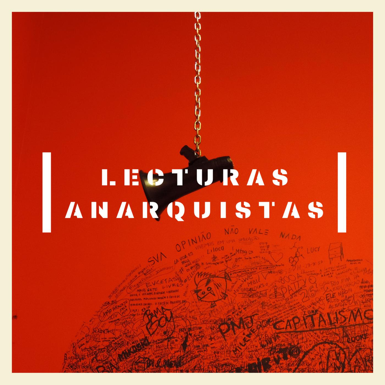TRANSNATIONAL UTOPIAS LATIN AMERICAN ANARCHISMS
Menu
Media
Art
Abraham Regino Vigo (1893-1957)
Abraham Regino Vigo was an Argentinian painter from Montevideo, Uruguay.
In many of his works, he depicted the proletariat struggle with many anarchist themes.
Abraham Regino Vigo was an Argentinian painter from Montevideo, Uruguay.
In many of his works, he depicted the proletariat struggle with many anarchist themes.
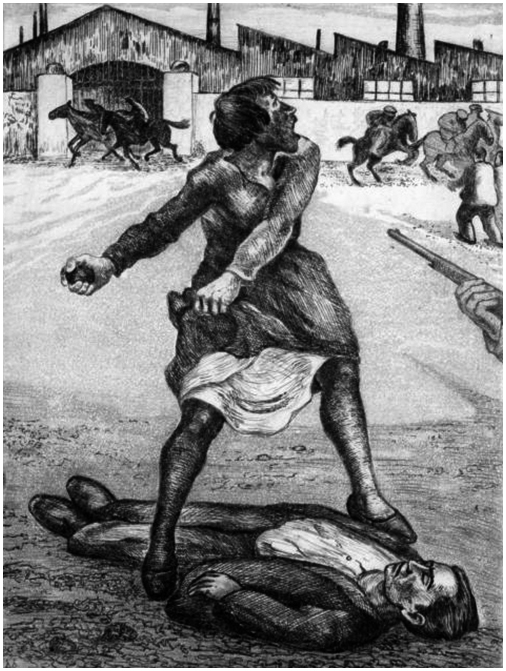
https://www.solidaridadobrera.org/ateneo_nacho/paginasexposiciones/arte_y_anarquismo.html
“La Huelga,” 1935
From the series “Proletarian Struggles,” the title translates to “The Strike.”
The charcoal piece depicts a worker standing over his fallen comrade, a rock in his hand ready to strike against authority. Cortez depicts an important tenet of worker solidarity in anarchy, Anarchism does not condemn and often encourages violent resistance such as throwing rocks.
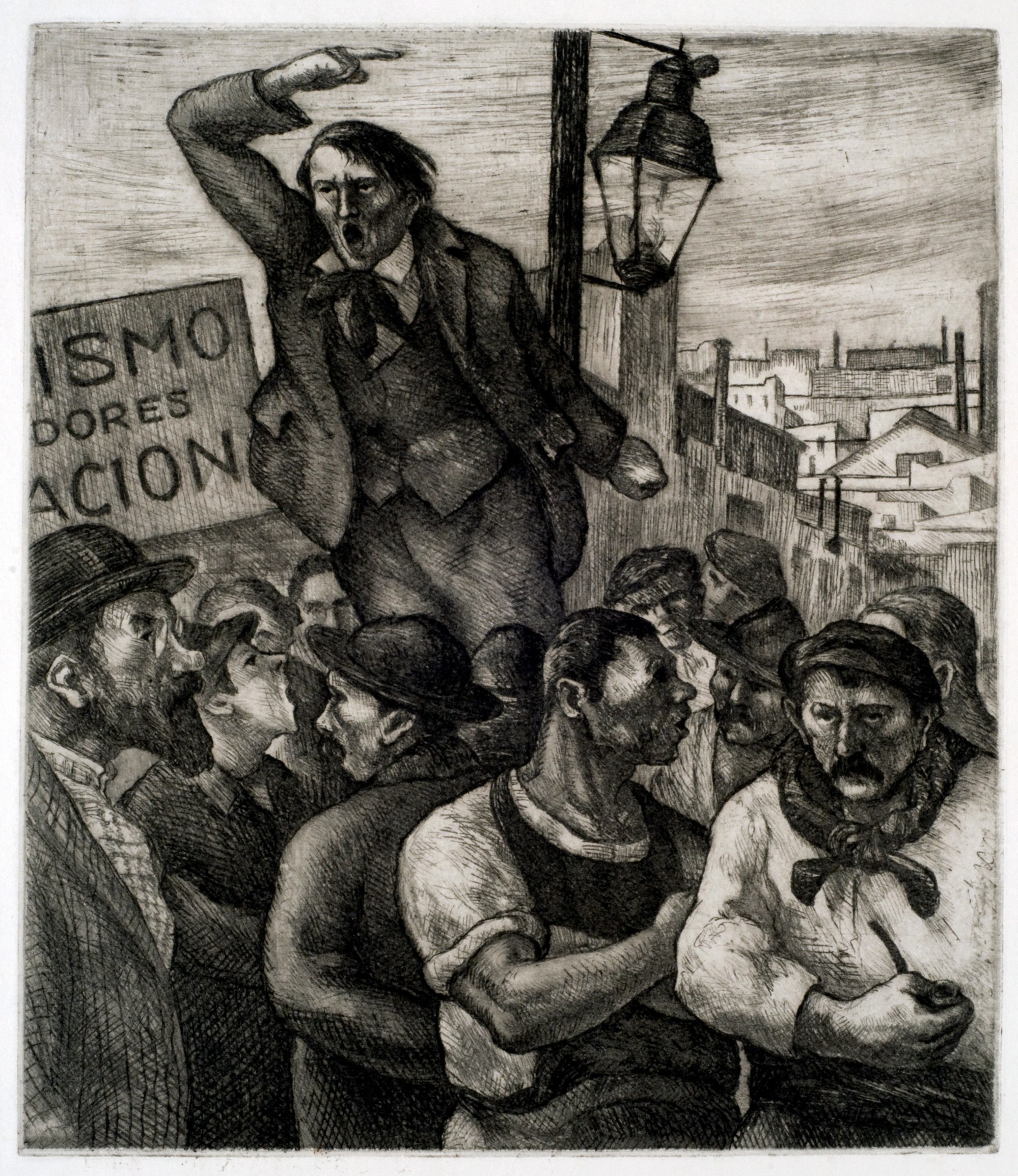
|
https://www.solidaridadobrera.org/ateneo_nacho/paginasexposiciones/arte_y_anarquismo.html “El Agitador,” 1933 From the series “The Speakers,” the title translates to “The Agitator.” The piece depicts a man in the middle of town square speaking passionately to a crowd of workers. Anarchists often held meetings in town squares to help spread their message. |
|
https://www.solidaridadobrera.org/ateneo_nacho/paginasexposiciones/arte_y_anarquismo.html “Oradora feminina,” 1920 From his series “The Speakers,” the title translates to “The Female Speaker.” This charcoal piece depicts a woman speaking to a crowd of other women. Historically, women anarchists often spoke to crowds as men did, even while facing sexism from their male comrades. Women were often “lectoras” in cigar factories, meaning they read newspapers, books, and articles to the workers during their shift. The artwork is fascinating to see, especially given the lack of depiction of female anarchists in the anarchist movement. |
Carlos A. Cortez (1923-2005)
Cortez was a Mexican-German anarcho-syndicalist. While he was born in the United States, he connected to Latin America through his work as it transcended borders. His artwork meshed together the styles of German expressionists and Chicano work.
Cortez was a Mexican-German anarcho-syndicalist. While he was born in the United States, he connected to Latin America through his work as it transcended borders. His artwork meshed together the styles of German expressionists and Chicano work.
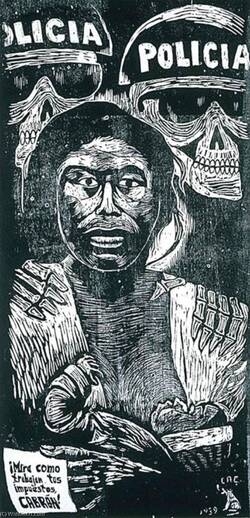
https://americanart.si.edu/artist/carlos-cortez-6203
“POLICIA (!MIRA COMO TRABAJAN TUS IMPUESTOS, CABRON!),” 1989
Cortez offers a sharp criticism of the police force. The painting titled, “POLICIA (!MIRA COMO TRABAJAN TUS IMPUESTOS, CABRON!),” translates to “Police (!Look at how your taxes work, bastard!”
He depicts the policemen as skeletons arresting a mother breastfeeding a baby. Essentially, Cortez argued that the police are targeting people who are not threats to the country. The police lack a soul. As an anarchist, he believed in the abolishment of the police force.
|
“De la tierra somos !no somos ilegales!,” 1984 The title of the painting translates “From the Earth we are! We are not illegals.” Cortez criticized the ant-immigration stance the United States had in letting immigrants join the country. He depicts a family of farmers who look at the viewer in shock. Anarchists believe that borders are fictional and do not exist. People belong together as a global community. |
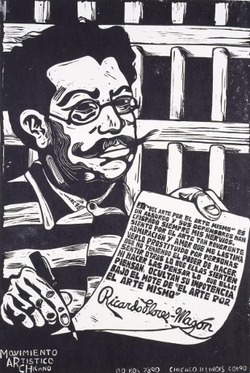
“Ricardo Flores-Magon,” 1978
Cortez depicts the Mexican-anarchist Ricardo Flores-Magon wearing a prison uniform in a jail cell. Flores-Magon holds a letter that says, “Eso de ‘el arte por el arte mismo’ es un absurdo, y sus defensores han crispado siempre mis nervios. Siento por el arte tan reverente admiración y amor, que me lastima verlo prostituido por personas que no teniendo el poder de hacer sentir a otras lo que ellas sienten, ni hacerlas pensar lo que ellas piensan, ocultan su impotencia bajo el mote de ‘el arte por el arte mismo’”
The English translation is:
“That ‘art for art's sake’ is absurd, and its defenders have always frayed my nerves. I feel such reverent admiration and love for art that it hurts me to see it prostituted by people who, not having the power to make others feel what they feel, or make them think what they think, hide their impotence under the moniker of "art for art itself “
By including Magon’s letter in the artwork, Cortez argued that his artwork held messages within it.
Graffiti Art
https://www.tumblr.com/blog/view/radicalgraff
“Radical Graffiti” is a blog consistently updating an archive of mostly anarchist graffiti from around the world. There are many works of graffiti art in Latin America in it.
https://www.youtube.com/watch?v=TRugJv-EJFw
“Evade y Lucha - Chile in Revolt” is a compilation of graffiti art and images of revolt in Chile.
https://www.tumblr.com/blog/view/radicalgraff
“Radical Graffiti” is a blog consistently updating an archive of mostly anarchist graffiti from around the world. There are many works of graffiti art in Latin America in it.
https://www.youtube.com/watch?v=TRugJv-EJFw
“Evade y Lucha - Chile in Revolt” is a compilation of graffiti art and images of revolt in Chile.
Music
Music plays an important role in resisting cultural hierarchies. Anarchists spread their ideas through music. With today’s technology, music can be virtually listened to anywhere, helping anarchists spread their ideas on a wider scale.

Reaccion Propria is an anarchist-metal band in Colombia founded in 1998.
Their motto “no estamos hoy por una revolución, sino por miles de ellas,” which translates to “we are not here today for a revolution, but rather for millions of them.”
To listen to their music, click here https://www.jamendo.com/artist/367878/reaccion-propia
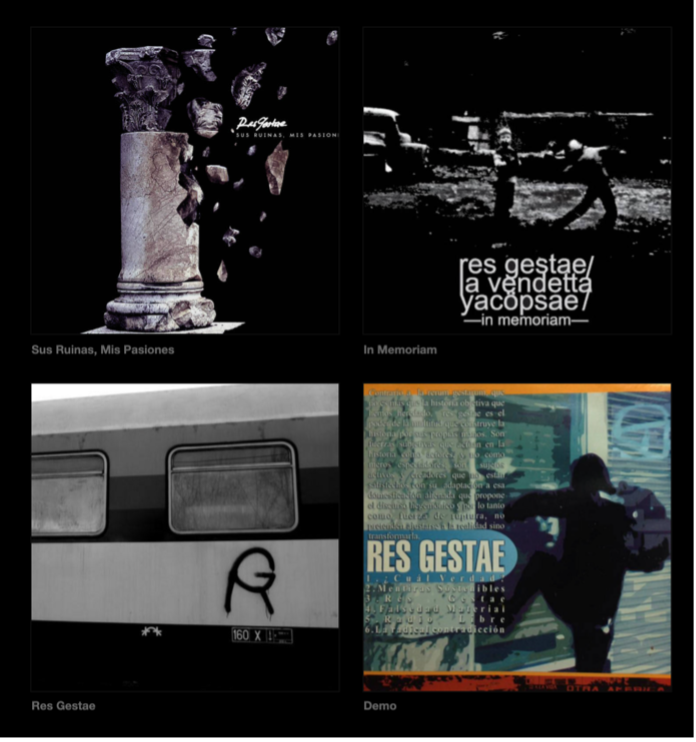
Res Gestae is an anarchist-punk band from Bogota, Colombia. The band criticizes the Colombian government, including paramilitary activity, the police, and the United States involvement. They advocate for the creation of a free culture.
Click the link below to listen to their music/
https://resgestae.bandcamp.com/music
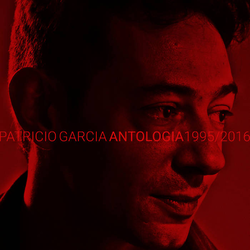
Patricio García is an Argenetinan anarchist who writes and sings music. He typically says he does not merge his beliefs in his music, but felt like he had to in his song “Anarquia 2001.” The title is a reference to the December 2001 riots in Argentina in which the economy collapsed. To listen to the song and support another anarchist, click below!
https://patriciogarcia.bandcamp.com/track/anarqu-a-2001
Podcast/Radio
|
https://www.listennotes.com/podcasts/lecturas-anarquistas-lecturas-anarquistas-I37jcSAXiMo/ “Lecturas Anarquistas” is a podcast discussing what anarchism stands for. With 19 episodes, the unnamed hosts read anarchist texts like Emma Goldman and break it down. |

“Regeneracion Radio” is a website that features news in Mexico through radio, video, and podcasts with an anarchist slant. The website also physically connects anarchists to one another through events and protests. Check it out at:
https://regeneracionradio.org/archivos/category/autonomia
Theatre
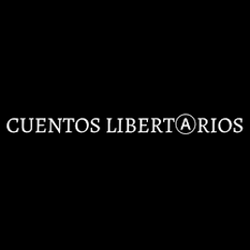
Cuentos Libertarios is a theatre company located in Chile dedicated towards informing people about anarchy through plays and musicals.
You can even watch some of their work on its Facebook page! https://www.facebook.com/Cuentos-Libertarios-592920261124125/
Social Media
Like newspapers, social media has connected anarchists around the world to each other. Anarchists can spread their ideology further without having to physically travel. There are plenty of social media accounts that can be found on Twitter, Instagram, and Facebook. Below are two that have captured our attention.
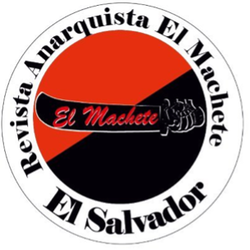
“Revista El Machete” is an anarcho-communist magazine in El Salvador that publishes artwork from local anarchist artists.
https://twitter.com/MacheteRevista
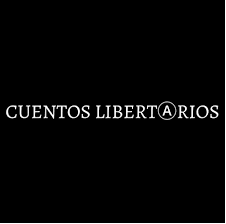
Not only does Cuentos Libertarios enact plays, but they also run social media to inform people about anarchy. The organization publishes multiple posts on important anarchist events that occurred on the date of publishing. It also publishes artwork daily.
https://instagram.com/cuentoslibertarios?utm_medium=copy_link
